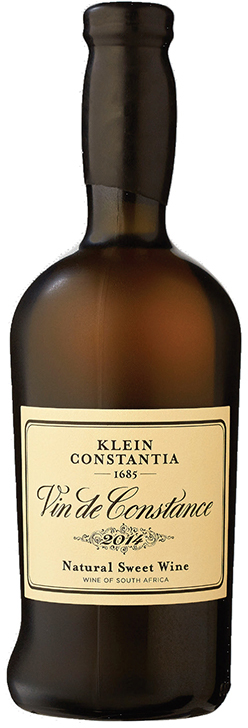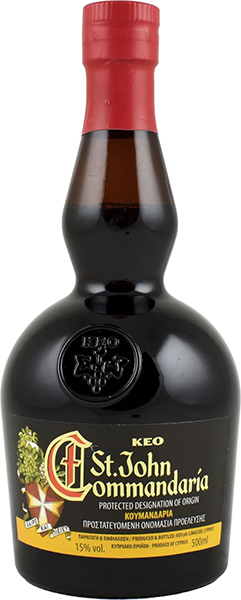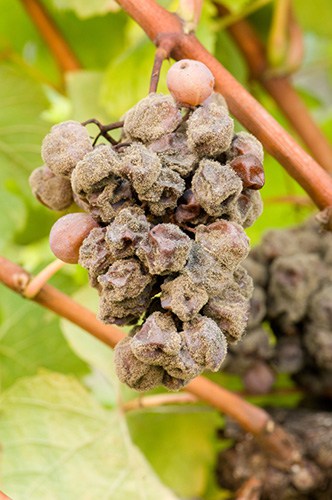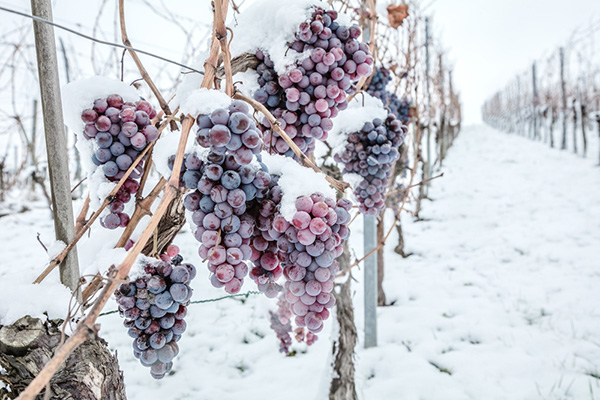Different Types of Dessert Wine [End a Meal in Style!]

Whether you’re a seasoned sommelier or a budding wine enthusiast, understanding the nuance of dessert wines can elevate your culinary experiences.
In this guide, I explain the different types of dessert wines, how they're made, and how they should be served.
Types of Dessert Wine
A dessert wine is essentially a sweeter than average wine so it can be a variety of styles.
Let's take a deep dive into the various kinds of dessert wine available.
Sweet Sparkling Wine
Charmingly bubbly and sweet, these wines bring a vivacious spirit to any occasion. They come in various styles, each having a distinct personality.
Asti Spumante

Asti Spumante, a fully sparkling wine from Piedmont, Italy, is made from the Moscato Bianco grape.
Its vibrant peach and apricot notes dance with floral aromas in a refreshing mélange. The sweetness is balanced by lively acidity, and the typical ABV is around 7-9%.
Pair it with fruit desserts or creamy cheeses to complement its effervescence and sweetness.
The Charmat method or Metodo Italiano is used, ensuring maximum fruitiness. Metodo Italiano ensures the second fermentation occurs in a pressurized tank rather than in the bottle.
This method maintains the grape's aromatic compounds and results in the wine's signature light effervescence.
Moscato d'Asti

Hailing from the Piedmont region in northwest Italy, Moscato d'Asti is a sweet, lightly sparkling (frizzante) white wine crafted from the Moscato Bianco grape, also known as Muscat Blanc à Petits Grains.
Known for its fragrant and aromatic profile, this wine is synonymous with celebration and joy.
Moscato d'Asti leads with prominent flavors of peaches, nectarines, and orange blossom, often complimented by nuances of elderflower and honeysuckle.
The wine's sweetness is gracefully balanced by its vibrant acidity, resulting in a pleasing, refreshing finish.
One of the more distinctive characteristics of Moscato d'Asti is its relatively low alcohol content, usually around 5-6% ABV. This lightness makes it a popular choice for those seeking a gentler, yet still gratifying wine experience.
Moscato d'Asti is incredibly versatile. Its sweetness and acidity balance rich, creamy desserts like panna cotta or tiramisu, while its aromatic nature harmonizes with spicy Asian cuisine or aged cheeses.
In the realm of sweet sparkling wines, Moscato d'Asti stands out as a vivacious and fragrant option that captivates with its gentle fizz and pronounced fruitiness.
Sweet Red Wine
These wines are rich, offering a balance between sweetness and hearty flavors.
Recioto della Valpolicella

This Italian sweet red wine is produced in the Veneto region of Valpolicella using dried Corvina, Rondinella, and Molinara grapes.
This wine's winemaking process involves a traditional technique called "appassimento," which dries the grapes to concentrate their sugars.
Tasting notes often include cherries, dried figs, and chocolate, balanced by a robust structure and an ABV of around 12-15%.
Recioto pairs beautifully with chocolate desserts or blue cheese.
Vin Santo Occhio di Pernice

Vin Santo Occhio di Pernice is a special type of Vin Santo, an esteemed dessert wine from Tuscany, Italy.
The phrase "Occhio di Pernice" translates to "eye of the partridge," referencing the beautiful reddish amber hue of this wine, reminiscent of the bird's eye.
Unlike traditional Vin Santo, which is made primarily from white grapes (usually Trebbiano Toscano and Malvasia), Vin Santo Occhio di Pernice is made predominantly from the red Sangiovese grape. By law, at least 50% Sangiovese must be used; the remainder can be other non-aromatic red grapes.
Winemaking techniques involve a lengthy drying process of the grapes, typically on straw mats or hung from rafters, to concentrate the sugars before fermentation.
The wine is then aged in small barrels called caratelli for a minimum of three years, though many producers age it much longer. This method gives Vin Santo Occhio di Pernice its distinct sweetness and concentrated flavors.
You can expect complex aromas of dried figs, cherries, and plums, with hints of almonds, honey, and spices.
It has a rich, velvety palate and a persistent finish. The alcohol content typically lies between 12-15% ABV, depending on the producer and vintage.
Vin Santo Occhio di Pernice pairs beautifully with traditional Tuscan almond biscuits called cantucci, but it also complements blue cheese, foie gras, and fruit-based desserts well.
Late Harvest Zinfandel

In California, Zinfandel grapes are sometimes left on the vine to create a late harvest version.
This wine offers robust flavors of ripe blackberry, raspberry jam, and chocolate, backed by Zinfandel's signature peppery note.
These late harvest wines pair nicely with blue cheeses, dark chocolate desserts, or even barbecued meats.
Brachetto d'Acqui

Brachetto d'Acqui is an aromatic, sweet, and lightly sparkling red wine from the Piedmont region in Italy.
Made from the Brachetto grape, it presents a bouquet of strawberry, raspberry, and rose petals.
With an ABV around 5.5%, it pairs exceptionally well with fruit desserts, chocolate, and blue cheeses.
Lambrusco

Lambrusco, while often dry, can also be made in a sweet style. It's a sparkling red wine from the Emilia-Romagna region in Italy, known for its juicy berry flavors and frothy mousse.
Sweet Lambrusco pairs wonderfully with hearty desserts, charcuterie, and cheese.
Sweet Dessert Wine
These wines are known for their balance of sweetness and acidity, making them versatile with various desserts.
Sweet Gewürztraminer

Gewürztraminer is a distinctive white grape variety known for its bold flavors and aromatic intensity.
Its name is derived from the German words "Gewürz" (spice) and "Traminer" (a grape variety), aptly highlighting its characteristic spicy profile.
The grape has pink to red skin, a rarity among white wine varieties, and is thought to have originated in the Tramin region of South Tyrol, a German-speaking area in northern Italy.
Today, Gewürztraminer is grown in wine regions around the world, with significant plantings in Alsace (France), Germany, Italy, the United States (particularly in California, Oregon, and New York's Finger Lakes), Canada, Australia, and New Zealand.
Gewürztraminer wine is almost unmistakable once in the glass, thanks to its unique aromatic profile. It's known for pronounced notes of lychee, rose petal, and exotic spices, with undertones of ginger, grapefruit, and apricot.
On the palate, Gewürztraminer often displays a rich, full-bodied texture, further characterized by low acidity and high alcohol content, usually around 13-15% ABV.
The low acidity and high natural sugar of Gewürztraminer grapes can lead to wines ranging from off-dry to sweet. Late-harvest and noble rot-affected (botrytis) versions of Gewürztraminer can be quite sweet and are among the most renowned dessert wines.
Gewürztraminer pairs well with a range of foods, particularly spicy Asian cuisine, Middle Eastern dishes, and strong cheeses, thanks to its intense aromatics and weight on the palate.
Sweet Riesling

Riesling is one of the most versatile white grape varieties in the world, producing wines that range from bone dry to lusciously sweet.
While regions like Alsace, France, and parts of Australia and the United States produce beautiful dry Rieslings, Germany and Austria are perhaps best known for their sweet versions.
In Germany, sweet Rieslings are categorized according to their sugar level at harvest: Spätlese (late harvest), Auslese (select harvest), Beerenauslese (select berry harvest), Eiswein (ice wine), and Trockenbeerenauslese (select dry berry harvest).
The latter three categories, often abbreviated as BA, Eiswein, and TBA, are incredibly sweet, made from grapes affected by noble rot or frozen on the vine, and are some of the most sought-after and expensive wines in the world.
Sweet Riesling offers an enticing bouquet of honey, ripe apple, peach, apricot, and citrus fruits, with mineral undertones and often a distinctive petrol-like aroma that develops with age.
Despite its sweetness, Riesling maintains a vibrant acidity, giving these wines a striking balance and making them feel refreshing rather than cloying.
Alcohol content is usually lower in sweet Rieslings, often around 7-9% for German styles, but can go up to 13% ABV for some late-harvest and ice wine styles.
Sweet Rieslings are some of the most age-worthy wines out there, with top-quality examples able to evolve and improve over several decades in the bottle.
Food pairings for sweet Riesling can be diverse. The classic partner is spicy Asian cuisine, where the wine's sweetness balances the heat.
It's also a beautiful match for rich pâtés, blue cheeses, and a variety of desserts, particularly fruit-based ones.
Sweet Müller-Thurgau

Müller-Thurgau is a white grape variety that was created in the 19th century by crossing Riesling and Madeleine Royale.
Named after its creator, Dr. Hermann Müller from Thurgau, Switzerland, this grape has found considerable success in Germany, where it's the second most planted white grape after Riesling, and in northern Italy, particularly in the Trentino-Alto Adige region.
While Müller-Thurgau is often used to produce dry wines, it can also make delightful sweet wines, particularly in Germany. Sweet Müller-Thurgau wines typically fall into the category of Spätlese, indicating that the grapes have been harvested late, resulting in higher sugar content.
In terms of tasting notes, sweet Müller-Thurgau wines usually exhibit floral aromas, combined with fruity flavors of apples, pears, peaches, and a hint of citrus.
Compared to Riesling, Müller-Thurgau has lower acidity, which gives sweet versions a smooth, round mouthfeel. The wine’s sweetness levels can range from off-dry to fully sweet, while its alcohol content typically falls around 10-11% ABV.
Sweet Müller-Thurgau wines are best enjoyed young while their fruity character is most vibrant. They pair well with a range of foods, from light appetizers and Asian cuisine to fruity desserts. The wine's lower acidity and softer profile make it a friendly and approachable choice for those new to sweet wines.
It's worth noting that sweet Müller-Thurgau, like its dry counterpart, often offers excellent value for the quality, making it a great choice for those looking to explore the world of sweet wines without breaking the bank.
Very Sweet Dessert Wine
This category includes lusciously sweet wines, often with a honey-like viscosity.
Sauternes

Sauternes is one of the most famous sweet wines in the world, hailing from the Bordeaux region of France.
This prestigious dessert wine takes its name from the Sauternes appellation, located in the southern part of Bordeaux's Graves district.
The production of Sauternes involves a unique natural phenomenon known as noble rot or botrytis cinerea. This fungus attacks the grapes, dehydrating them and concentrating the sugars and flavors. The result is a lusciously sweet wine with a complex flavor profile.
Sauternes is typically made from a blend of Sémillon, Sauvignon Blanc, and Muscadelle grapes, with Sémillon making up the majority of the blend.
Sémillon's thin skin makes it particularly susceptible to noble rot, while Sauvignon Blanc and Muscadelle contribute acidity and additional complexity.
Sauternes is renowned for its deep golden color and complex aromas of honey, apricot, peach, and often a distinct note of botrytis' unique "spicy" character.
On the palate, it's intensely sweet yet balanced by good acidity, providing a refreshing finish. Aging can add nuances of caramel, nut, and even mushroom. The alcohol content usually falls around 13-14% ABV.
Sauternes is a wine of longevity and can age for decades in the bottle. It gains complexity with age, developing an even deeper color and more pronounced caramel and nutty flavors.
When it comes to food pairings, Sauternes is incredibly versatile. It pairs perfectly with foie gras, creating a classic French pairing, but also goes well with blue cheese, spicy dishes, and a wide variety of desserts, especially those involving fruit or creamy components.
Hungarian Tokaji

Tokaji, pronounced as "toe-kai", is one of the most prestigious sweet wines in the world, produced in the Tokaj wine region of northeastern Hungary.
This historic wine region, a UNESCO World Heritage Site, is known for its unique volcanic soil and favorable microclimate, which encourage the development of Botrytis cinerea, or noble rot.
Tokaji is primarily made from Furmint grapes, often with a blend of Hárslevelű and Sárgamuskotály (Muscat Blanc à Petits Grains).
The Botrytis-affected grapes, known as aszú berries, are individually picked and mashed into a paste, which is then added to a base wine made from non-affected grapes. The mixture is fermented and aged in small oak barrels in underground cellars.
Tokaji Aszú, the most renowned style, is classified by its sweetness level, indicated by the term "puttonyos" on the label.
Traditionally, this ranged from three to six puttonyos, with six being the sweetest, but new regulations as of 2013 specify a minimum of five puttonyos for Aszú wines.
There's also Eszencia, a super-sweet wine made purely from the free-run juice of aszú berries, which can take years or even decades to ferment due to its high sugar content.
Tasting notes for Tokaji Aszú wines often include flavors of honey, apricot, orange marmalade, and ginger, with a notable mineral streak from the region's volcanic soil.
Despite their sweetness, these wines retain a bright acidity, which brings balance and a refreshing quality.
Tokaji wines are incredibly age-worthy, with top-quality examples able to evolve and improve for several decades, even centuries in the bottle.
They pair beautifully with foie gras, blue cheese, and fruit-based desserts, or can be enjoyed on their own as a special treat.
Constantia

Constantia is a renowned wine-producing region in South Africa, situated in the southern suburbs of Cape Town.
It's best known for its production of sweet dessert wines, which were highly prized in the 18th and 19th centuries by European royalty and have recently seen a revival.
The region's flagship wine is called Vin de Constance, produced by the historic Klein Constantia Estate.
This sweet wine is made from Muscat de Frontignan (also known as Muscat Blanc à Petits Grains) grapes, which are allowed to raisin on the vine to concentrate their sugars before being hand-harvested.
Vin de Constance is known for its rich amber color and complex aromatic profile. Expect aromas and flavors of dried apricot, orange peel, honey, and exotic spices, with a backbone of lively acidity to balance out the wine's sweetness. Aging can add nuances of nuts and caramel. Its alcohol content usually falls around 14% ABV.
Vin de Constance, like other high-quality sweet wines, is capable of aging and evolving in the bottle for several decades. In fact, it's said that a bottle of this wine dating from the 18th century was found to still be in good condition.
In terms of food pairing, Vin de Constance works beautifully with blue cheese, foie gras, and rich, fruity desserts. However, it's also complex and balanced enough to be enjoyed on its own as a "meditation" wine.
Once adored by the likes of Napoleon Bonaparte, Constantia's sweet wines continue to charm wine enthusiasts today with their unique expression of the Muscat grape and their compelling history.
Ice Wine

Ice wine, or Eiswein in German, is a unique and luxurious type of dessert wine produced from grapes that have been frozen while still on the vine.
This natural freezing process concentrates the sugars and flavors in the grapes, leading to a highly sweet and aromatic wine.
German Eiswein
Germany is one of the original producers of Eiswein. The grapes, often Riesling but also other varieties, must endure freezing temperatures before they can be harvested and pressed.
The water in the grapes freezes but the sugars do not, resulting in a concentrated, sweet juice. German Eiswein is known for its vibrant acidity, which balances the sweetness, and its intense flavors of tropical fruit, citrus, and honey.
Canadian Ice Wine
Canada, particularly the Niagara Peninsula, is another major producer of ice wine. The cool Canadian climate is ideal for producing this style of wine consistently.
In Canada, Vidal Blanc, a hybrid grape variety, is commonly used, but Riesling and Cabernet Franc are also popular. Canadian ice wines are renowned for their rich texture and flavors of apricot, peach, and citrus.
The production of ice wine is risky and labor-intensive, which contributes to its high cost. The harvest must be done in the middle of the night or early morning when temperatures are coldest, and yields are usually very low.
However, the resulting wine is a unique treat, with a balance of sweetness and acidity that makes it stand out among dessert wines.
When it comes to food pairings, ice wine works well with a variety of desserts, especially fruit-based ones. It can also complement rich, pungent cheeses, foie gras, or be enjoyed on its own as a dessert.
Muscat of Samos

This sweet wine from the Greek island of Samos is made from a local clone of Muscat Blanc à Petits Grains.
It's often vinified into a range of styles, from dry to sweet, and sometimes fortified. Sweet versions are rich and honeyed, with notes of apricot and citrus.
Sweet Muscat wines, with their aromatic intensity and often refreshing acidity, pair well with a variety of desserts, especially those featuring fruit, almonds, or cream.
They can also complement spicy foods, thanks to their sweetness and aromatic character.
Sweet Fortified Wine
The addition of spirits makes these wines sweet and robust.
Vin Doux Naturel (VDN)

Vin Doux Naturel, or VDN, is a classification of naturally sweet wine from France.
As suggested by its name, "naturally sweet wine," these wines retain their natural grape sugars due to the process of mutage, in which fermentation is halted by the addition of a neutral grape spirit.
The practice of mutage, developed by Arnaud de Villeneuve in the 13th century, allows the wine to retain much of the grapes' natural sweetness while increasing the alcohol content.
Once the grape must (unfermented grape juice) has begun to ferment, a spirit, typically a grape brandy, is added, effectively killing the yeast and stopping the fermentation process.
VDNs can be red, white, or rosé, and they're produced in several appellations in the southern parts of France, including but not limited to Rivesaltes, Banyuls, and Maury in the Roussillon, and Muscat de Beaumes-de-Venise in the Rhône Valley.
Each region has its distinctive grape varieties. Grenache is the primary grape used in Banyuls, Maury, and most of Rivesaltes, while Muscat Blanc à Petits Grains is used for Muscat de Beaumes-de-Venise.
Depending on the grape variety and the region, VDNs can exhibit a wide range of flavors. Generally, they're rich and sweet, with a high alcohol content.
Red VDNs often display flavors of dark fruits, chocolate, and spices, while white versions can be intensely aromatic, with notes of exotic fruits, citrus, and floral nuances.
Vin Doux Naturel wines are incredibly versatile when it comes to food pairing. They're traditionally served as aperitifs or dessert wines.
White and rosé VDNs pair beautifully with foie gras, blue cheese, or desserts featuring fruits.
Red VDNs, on the other hand, go well with chocolate-based desserts, fruit tarts, or even with savory dishes like blue cheese or spicy Asian cuisine.
Some notable examples of Vin Doux Naturel:
Port

Port is a fortified wine from the Douro Valley in Northern Portugal, known worldwide for its rich, sweet flavors and high alcohol content.
This type of wine is often enjoyed as a dessert wine because its sweetness pairs well with a range of desserts, from chocolates to cheeses.
Here's a look at the main types of Port that are typically served as dessert wines:
Ruby Port
Ruby Port is the most extensively produced type of Port. It is a blend of several vintages, aged for two to three years in large oak vats to preserve its bright, vibrant fruit flavors.
Ruby Ports have notes of red and black fruit, such as cherries and blackberries, and are generally less complex than other types of Port.
They're perfect for pairing with chocolate desserts or strong cheeses.
Tawny Port
Tawny Port is aged longer in wooden barrels, typically between 10 to 40 years. This extensive aging process imparts a tawny or brown color and gives the wine a nutty, caramel, or toffee-like flavor.
These Ports also display flavors of dried fruits like figs, apricots, and dates. Tawny Ports are excellent with desserts that feature nuts, caramel, or coffee flavors.
Vintage Port
Vintage Port represents the top echelon of Ports. It's made from the best grapes in exceptional years and aged for about two years in oak before being bottled unfiltered.
Vintage Ports can then be aged for many more years in the bottle, where they develop complex flavors.
Early on, they display rich, dark fruit flavors, but over time, they acquire more nuanced, tertiary flavors like leather, tobacco, and cocoa.
Vintage Port is often paired with blue cheese or dark chocolate desserts.
Late Bottled Vintage (LBV) Port
LBV Port is made from grapes of a single year and aged in barrels for four to six years before bottling.
They offer a taste similar to Vintage Port but are ready to drink sooner. LBV Ports show concentrated flavors of ripe black fruits, chocolate, and spices.
They pair well with creamy desserts and aged cheeses.
White Port
Although less common, White Port is made from white grape varieties and can range from dry to very sweet.
The sweet versions often have flavors of almonds, nuts, and honey, making them a good match for lighter desserts or even spicy Asian fare.
Commandaria

Commandaria is a fascinating dessert wine hailing from the island of Cyprus. With a history that spans thousands of years, it holds the claim as one of the oldest types of wine still in production today.
The wine gets its name from the region where it's produced, the Commandaria region located on the slopes of the Troodos mountains.
This area was once controlled by the Knights Templar, who established a headquarters (or "Commandery") there during the Crusades, hence the name.
Commandaria is made from two indigenous grape varieties: white Xynisteri and red Mavro. The grapes are typically harvested late and left to dry in the sun, concentrating the sugars and flavors to produce a naturally sweet wine.
The wine is then fermented and aged in oak barrels for a minimum of two years, but often much longer. This aging process further develops the flavors and increases the alcohol content, which typically ranges between 10 and 20% ABV.
When it comes to tasting notes, Commandaria is known for its intense flavors of dried fruit, honey, caramel, and spice. Despite its sweetness, it also retains a good level of acidity, which keeps it balanced and prevents it from feeling too cloying.
Commandaria pairs excellently with rich, sweet desserts, blue cheeses, or can be enjoyed on its own as a digestif.
It also has impressive aging potential, with some of the best examples able to improve over several decades in the bottle.
Pedro Ximénez

Pedro Ximénez, often abbreviated as PX, is a white grape variety primarily grown in the Andalusian region of southern Spain, notably in the Denominations of Origin (DO) of Montilla-Moriles and Jerez-Xérès-Sherry. It's renowned for producing some of the world's sweetest and most luscious dessert wines.
The production process for Pedro Ximénez wine is distinctive. Instead of being pressed immediately after harvest, the grapes are laid out in the sun to dry, a process known as "asoleo."
This raisinates the grapes, concentrating their sugars and flavors. The grapes are then pressed, and the juice is fermented and fortified.
A hallmark of Pedro Ximénez wine is its lengthy aging in a solera system, a process of fractional blending in which wines from different vintages are mixed over time.
The wine is stored in American oak barrels in conditions that encourage oxidation, which contributes to its unique flavor profile.
The resulting wine is dark, almost ebony in color, with a viscous, syrupy texture. On the nose, Pedro Ximénez is remarkably complex and inviting, offering aromas of dried figs, raisins, molasses, coffee, and chocolate.
On the palate, it's exceptionally sweet but balanced by soft acidity, with flavors that echo the nose.
Despite its sweetness, Pedro Ximénez is surprisingly versatile when it comes to food pairings. It's a classic partner for rich desserts, especially those featuring chocolate, but it also pairs well with savory dishes.
A drizzle of Pedro Ximénez can elevate foie gras, blue cheese, or even slow-cooked meats. It can also be served over vanilla ice cream for a simple yet decadent dessert.
Fortified Muscat Blanc

Muscat Blanc à Petits Grains, known for its rich and aromatic profile, is used across the globe to produce a variety of wine styles, including fortified wines.
These wines are known for their sweetness, complexity, and the ability to age well due to the addition of spirit during the winemaking process.
Muscat de Beaumes-de-Venise
One of the most renowned regions for producing fortified Muscat Blanc is Beaumes-de-Venise in the Rhône Valley of southern France.
These wines, made entirely from Muscat Blanc à Petits Grains, are vin doux naturels, a type of fortified wine where fermentation is stopped by adding a neutral spirit.
The result is a wine that balances sweetness with fresh, aromatic notes of peach, orange blossom, and honey.
Muscat of Alexandria in Setúbal, Portugal
In the Setúbal Peninsula of Portugal, fortified Muscat is made using the Muscat of Alexandria grape (a sibling to Muscat Blanc).
Known as Moscatel de Setúbal, these wines are robust, with a deep amber color and notes of caramel, dried fruit, and nuts.
They're often aged in oak, which adds complexity and depth to the flavor.
Australian Liqueur Muscats
Australia, particularly Rutherglen in Victoria, is famous for its fortified Muscat wines, which are made using the local Brown Muscat variety (a mutation of Muscat Blanc à Petits Grains).
These wines are aged for long periods, developing concentrated flavors of dried fruit, caramel, and toffee.
They are classified into different tiers (Rutherglen, Classic, Grand, and Rare) based on their age and richness.
Fortified Muscat Blanc wines are versatile when it comes to food pairing, going well with a range of desserts, particularly those featuring fruit or nuts, as well as with blue cheeses. Given their richness and intensity, they're also delightful when savored on their own.
Vin Santo Liquoroso

Vin Santo, or "holy wine," is a beloved and iconic wine from Italy, primarily produced in the Tuscan region. It's an intensely flavored, sweet dessert wine that comes in various styles, including the fortified version, Vin Santo Liquoroso.
To make Vin Santo, the grapes (mainly Trebbiano and Malvasia) are traditionally harvested in late autumn and then dried on straw mats or hung from the rafters to concentrate their sugars and flavors, a process known as "appassimento".
After pressing, the juice is fermented and then fortified with grape spirit, which arrests fermentation and leaves residual sweetness in the wine.
The wine is then aged in small barrels, called "caratelli," often made from chestnut, cherry, or oak, and traditionally sealed with cement.
These barrels are stored in an attic or "vinsantaia," where they are subjected to the seasonal temperature variations of the region, which influences the wine's development.
This extended aging process, usually between three to ten years, imparts a deep amber to tawny color to the wine and develops complex flavors.
Vin Santo Liquoroso is highly aromatic, with notes of dried fruits, honey, almonds, and spices. On the palate, it's intensely sweet but balanced by good acidity, displaying flavors that mirror the nose, along with caramel and oxidative notes due to its long aging period.
Food pairings for Vin Santo Liquoroso are versatile. It's traditionally served with "cantucci" (Tuscan almond biscotti), which are dipped into the wine.
However, it also pairs well with a variety of desserts, foie gras, or blue cheese.
Alternatively, you can simply enjoy a glass of this "holy wine" on its own as a delightful conclusion to a meal.
How are Dessert Wines Made?
The process of making dessert wines varies, with different techniques employed to concentrate the sugars in the grapes.
Let's take a look at the most common methods of creating those sweet dessert wines that we love so much!
Late Harvest
Late Harvest refers to the practice of leaving grapes on the vine long after they have ripened. This allows the sugars in the grapes to concentrate, yielding a sweet wine.
The extra time on the vine may also allow for the development of botrytis cinerea, or "noble rot," which we will discuss further below.
Late Harvest wines are popular in many regions, with notable examples including Late Harvest Riesling and Sauternes.
Straw Mat or Straw Wine (Passito Method)
This method, also known as the passito method, involves drying harvested grapes on straw mats or racks to dehydrate and concentrate the sugars before fermentation.
This results in a sweet wine with a rich, raisin-like character. Notable examples of straw wines include Italian Vin Santo and Amarone, as well as French Vin de Paille.
Noble Rot (Botrytized Wines)

Noble Rot, or Botrytis cinerea, is a fungus that affects the skin of grapes, causing them to shrivel and concentrate their sugars.
The resulting wine exhibits unique honeyed and mushroom-like flavors. The most famous example of a botrytized wine is Sauternes from Bordeaux, France.
Other examples include Tokaji Aszú from Hungary and Beerenauslese or Trockenbeerenauslese from Germany.
Ice Wine

Ice wine, or Eiswein in German, is made from grapes that have been left to freeze on the vine.
The water in the grapes freezes, but the sugars do not, allowing for a concentrated sweet juice to be pressed from the grapes.
This results in a wine with high sugar levels and often high acidity, providing balance. Notable regions for ice wine include Canada, Germany, and Austria.
Fortification
Fortification is the process of adding a neutral grape spirit to halt fermentation, leaving residual sugar in the wine and increasing the overall alcohol content.
This process is used to make various types of sweet fortified wines such as Port, Madeira, Marsala, and Vin Doux Naturel.
These wines can vary in sweetness and style, but they are all characterized by a higher alcohol content compared to non-fortified wines.
How are Dessert Wines Served?
Serving dessert wines appropriately is essential for enjoying their rich flavors and aromas fully.
Here are some general guidelines:
What's your favorite dessert wine? Let's get the debate started in the comments section!
